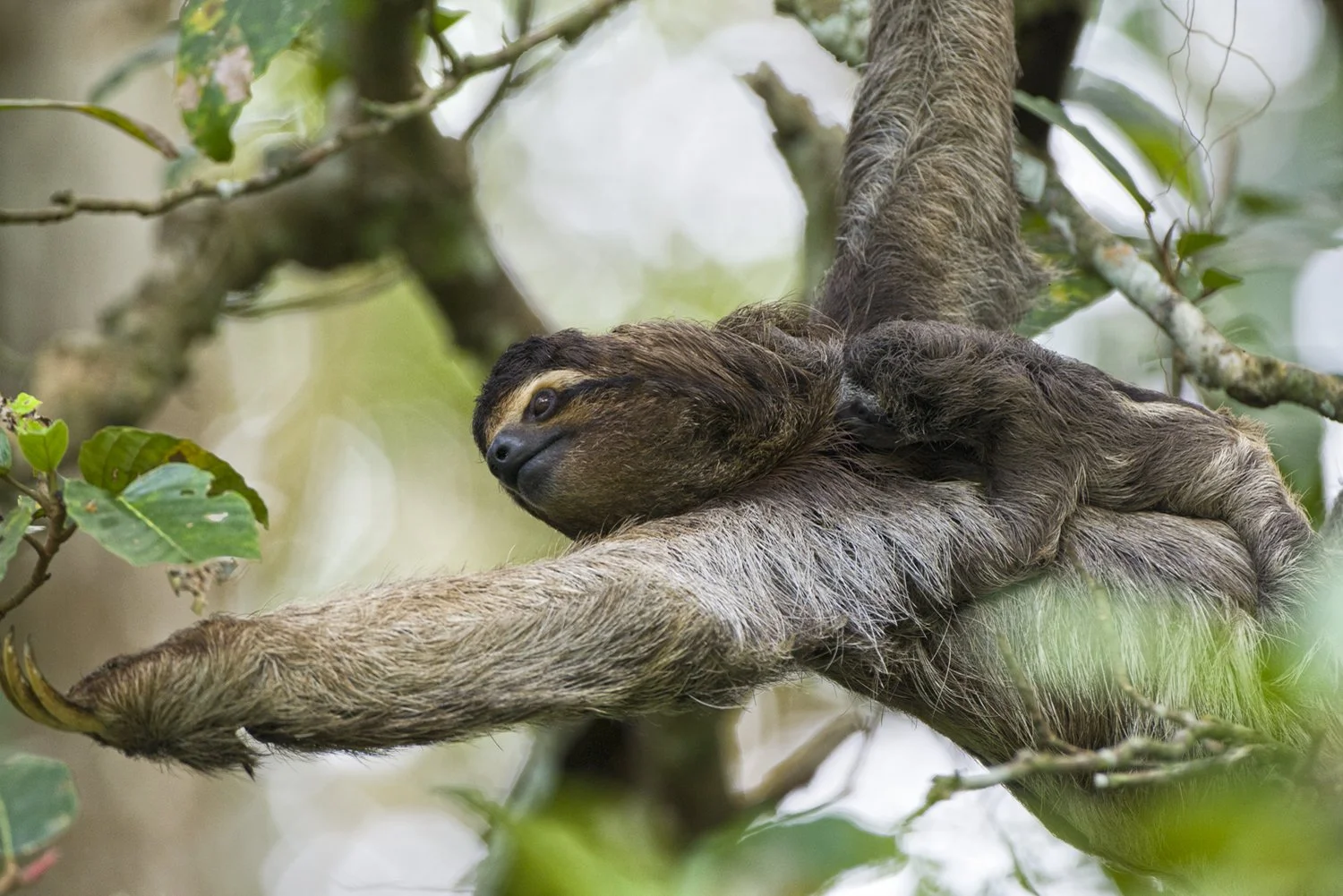
Why Sloths?
Sloths teach us patience, balance, and the art of slowing down - lessons the world needs now more than ever. But while they move slowly, their race toward extinction is happening fast. Protecting sloths means protecting rainforests, biodiversity, and a way of living more in harmony with nature.

Despite their iconic status, we still lack basic data about the conservation status and health of sloth populations.
Based on our 17 years of experience working with sloths in Costa Rica, the signs are deeply concerning. In areas where sloths were once plentiful, we have witnessed their populations vanish entirely over the past decade.
In Costa Rica alone, the human population has doubled in the past 40 years, and urban development has surged by 250%. Species like sloths and primates, which rely heavily on connected forest canopies, are especially vulnerable to this fragmentation. In Costa Rica’s Talamanca province, where we are based, urban sprawl has increased by 30% in just the past two years, with an estimated 3,000 sloths lost annually. Globally, 40% of all sloth species are now threatened with extinction. This matters because sloths are more than just charismatic animals - they are important to the health of tropical rainforest ecosystems.

Why are sloths so important?
Sloths play an important role in maintaining the health of rainforest ecosystems. As herbivores, they help regulate the growth of specific plant species and contribute significantly to nutrient recycling.

They are also an integral part of the rainforest food web, serving as prey for iconic predators like harpy eagles, ocelots, and jaguars.
The survival of sloths is essential for maintaining the delicate ecological balance within tropical forests.
Sloths serve as valuable indicators of forest health. Their survival is directly linked to canopy connectivity and their sensitivity to habitat disturbances. When sloths are thriving, it signals that other species dependent on the same forest conditions are also flourishing. By protecting sloths, we can drive broader conservation efforts that benefit entire ecosystems.
Donate Today
Let’s make the world a better place for sloths.
100% of your gift protects sloths, and we will show you the difference you make with impact updates, photos, and GPS coordinates from the field.



